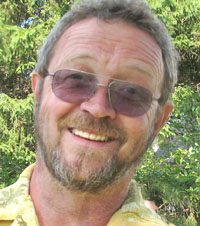We came upon a child of God; he was walking along the road. We asked him to tell us where he was going, and this he told us: “I just got back from Yasgur’s Farm, checking out the rock ‘n’ roll bands, and I missed my bus. Can you give me a lift to Monticello?”
So, Susan and I were in Philly after the blues cruise, visiting Gino and Patricia, and we took a long weekend for our Woodstock pilgrimage. At last we would see the historic hippie site. Take a knee.
Woodstock today hosts frequent music, art, theater, and craft events. Just as on the blues cruise, in Woodstock many off-stage, off-script celebrities walked amongst us. We might not have been able to identify any of them, but when you see women in shades and capes and guys with long flowing hair, extravagant beards, wearing loud, lavish, or hip attire, you figure they must put on a performance somewhere.
Over 80 accomplished musicians, over 50 noted artists, and over 25 published writers have at one time, if not currently, called Woodstock home.
I didn’t buy T-shirts in Woodstock. History tells us that after concert promoters stamped posters as The Woodstock Music & Art Fair, the local folks petitioned to ban the concert because they didn’t want the hippie influx. The promoters had to relocate, start over, but they kept the Woodstock name. Then that new community took up a petition and blocked the concert again.
Finally, just a couple months before the concert date, friendly, prosperous dairy farmer Max Yasgur, whose son was a hippie, invited the promoters to bring the party to Bethel Woods, 43 miles southwest of Woodstock. I bought my T-shirts there.
The day before the museum visit, we drove through little towns along the Hudson River and ended up in Hyde Park. “Home of FDR!” yelled Susan, excited. We toured his residence and the first presidential library. We stepped inside Roosevelt’s living room, dining room, bedroom, saw his wheelchairs preserved, and the ramps and dumb waiter still in place.
Now, there was a wealthy man who truly cared for the welfare of the common man. Today welfare is a dirty word. People are being conditioned not to expect any.
We’d lost a good deal of the day. I have an app called Find Craft Beer. Tap it and it maps every source for 25 miles. We found a listing called Plan Bee Farm Brewery that bottles unique beers using local plums, strawberries, watermelons, peaches, apples, lemon verbena, and so on. Also it looked to have something to do with bees. Gino has done work for years on a bee sanctuary in Virginia. He wanted to see the bees.
We took the eight-mile drive, zigzagging into rural roads, going deeper into the trees, until a left on a dirt road past the cow and a hand-painted sign showed the way. We eased down a narrow driveway and up a slope to under-tree parking. The tasting tent was a yert with a wooden shed behind it. Two young ladies stood at the counter. Around the yard were chickens and loose-jointed picnic tables of different sizes. Four pallets on cinder blocks, a stool, and a music stand acted as a stage. Goats bleated from their fenced-in area to the right. No bee hives were in sight, but random bees flew harmlessly about inside the yert and around the tables.
“I love it,” exalted Gino, arms out, fingers flexed. We laughed, talked, and sipped for an hour.
The young owners, who inherited the tree farm, do have a bee farm, but it is separate and elsewhere. The brewery was their Plan B if the honey business didn’t work out, but it did.
The Bethel Woods Woodstock Museum tour brought on a fabulous flashback. Walls were adorned with psychedelic artifacts and explanations. Videos on different aspects of the concert looped in small theaters. One theater was decked out on the inside of a multi-colored mini-bus.
At the tour’s tail-end, I said hello to a small, smiling Latino man in a moustache and plaid shirt in an exhibit hall. He asked me in broken English if I had attended the Woodstock Concert. I frowned and shrugged. “No.”
Most of the exhibits came with text-heavy paragraphs. This poor guy had been struggling to read all he could. Later, outside, in the parking lot, we saw the man again. He asked us for a ride to Monticello, ten miles away, because he had lost track of time reading the English and missed his tour bus, the last run.
“Sure, if we’re going that way,” I said. The others were wary. Patricia explained we were going in the opposite direction and apologized.
He politely demurred. “It’s OK. Many people are coming out. Someone will give me a ride.” And off we drove.
wo miles down the road Patricia said, “Whoops! We’re going the wrong way. Turn around.”
After passing the museum turn again, on the highway, a hundred yards further, we saw the little man walked fast along the roadside and hitchhiking. “Gino, we gotta pick him up,” I said.
We did. His name was Renaldo from Chile. He was 55. He was eight went Woodstock occurred and the music shaped his life. He and his wife made the journey to New York City so that he could take a solo day trip by bus to Monticello where he would catch a shuttle to the Woodstock museum ten miles further away. The wife stayed in the hotel in Manhattan. Renaldo bought a refrigerator magnet. He thanked us. “Much gratitude. Much gratitude.” He said he had at last fulfilled a life-long goal. We dropped him off at the Charter Bus Depot.
Steve Gibbs is a retired Benicia High School teacher who has written a column for The Herald since 1985.







Leave a Reply